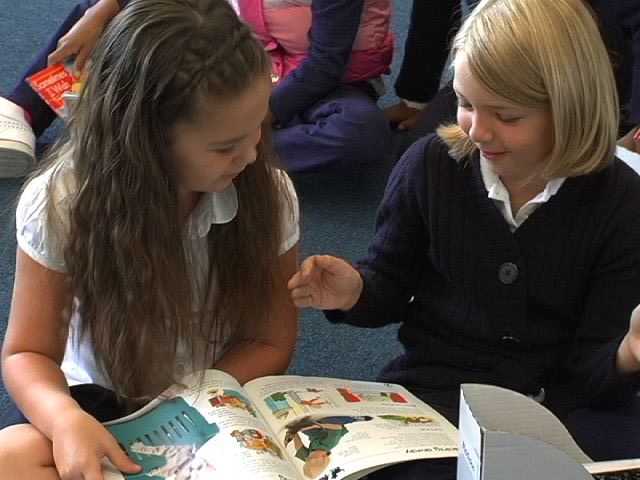Joan Moser
 The first thing I noticed was her melodic tone of voice—a little deeper, but still familiar—and the precise, unrushed cadence. “Hey, Mrs. Moser!” Catapulted back 20 years, I could almost smell the crayons and fresh-air skin of my K–1–2 multi-age students. An unusually creative and sensitive child, Emily had been my student for three years. She had adored reading and building elaborate fairy houses out of the sticks, leaves, and acorns that adorned the Pacific Northwest. Emily had been what I often refer to as an Indigo child—intuitive beyond her years, and in touch with the earth and her effect on it.
The first thing I noticed was her melodic tone of voice—a little deeper, but still familiar—and the precise, unrushed cadence. “Hey, Mrs. Moser!” Catapulted back 20 years, I could almost smell the crayons and fresh-air skin of my K–1–2 multi-age students. An unusually creative and sensitive child, Emily had been my student for three years. She had adored reading and building elaborate fairy houses out of the sticks, leaves, and acorns that adorned the Pacific Northwest. Emily had been what I often refer to as an Indigo child—intuitive beyond her years, and in touch with the earth and her effect on it.
Yet Emily, an amazingly bright and joyful child, had been “tagged” by district-required standards as a failing reader when she was five, six, and seven years old. She had been pointed out to me, my principal, and her parents as a student who “should not be promoted to the next grade,” according to the district-inflicted fluency assessment. Emily had been labeled an inadequate reader and I her incompetent teacher. As I thought back on those years, the feeling of frustration, anger, and helplessness returned in a rush of emotion.
No longer a little girl with curly hair, Emily had grown into a beautiful young woman. “I’m so happy to see you!” she said in her lilting, patient drawl. “Would you mind giving me your address?” She told me that she is getting married in April and graduating with her master’s degree in architecture, and she invited me to attend both ceremonies. I agreed amid hiccups of tears, quite certain that Emily now thinks of me as a bona fide crazy old lady.
With a hug and “I’ll see you soon,” I walked back to my car, wondering what the creators of the fluency assessment would think of Emily now. She never did pass the fluency assessment—and wouldn’t pass it today, since people cannot read faster than they speak. What would have become of this successful young woman if her parents and teacher had not fought so hard to let Emily be Emily, rather than becoming a casualty of retention based on a single score?
No assessment, program, or mandate knows the children in our care as well as the people who spend their days shoulder to shoulder with them. We must use our knowledge, compassion, and understanding of each unique child to best serve them. (And Emily, I can’t wait to celebrate your upcoming marriage and graduation. You are a shining example of why teachers love the work we do.)
News from The Daily CAFE
 Classroom Tips and Resources . . .
Classroom Tips and Resources . . .
Narrowing the Focus of the Lesson to Make It Brain Compatible
Shannon Campbell, a fifth-grade teacher, shares how she uses her curriculum as a resource to provide support, extend instruction, and adjust the focus and length of the lesson.
 Timely Ideas . . .
Timely Ideas . . .
Domino Decimal Game
With just a few tools, students will be engaged adding and subtracting decimals.
 Activities and Lessons . . .
Activities and Lessons . . .
Nudging a Student to Articulate Strengths and Goals
Watch this third grader learns how to improve his comprehsion by checking for understanding after each paragraph.
 Focus on Health . . .
Focus on Health . . .
Listen to the Silence
Silence can teach us and bring us peace.





